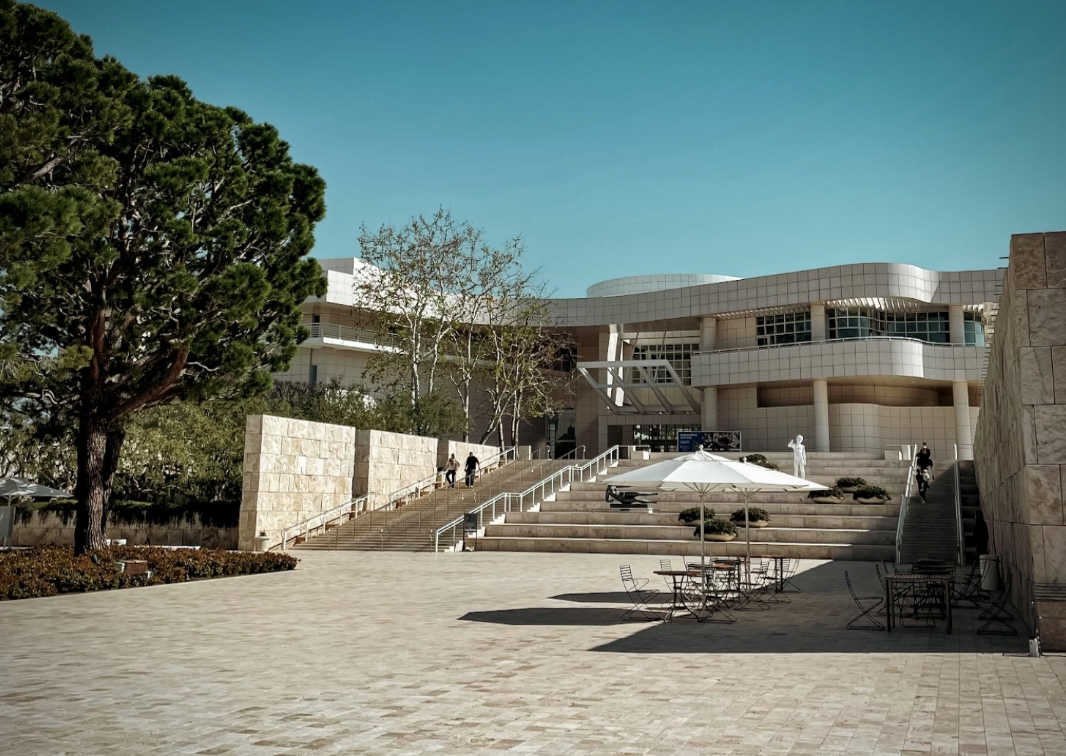English Class Trip to The Getty: Recollection, Renewal, and Novelty
March 25, 2023
On Friday, Mar. 3, sophomores in English 2 Honors had the opportunity to visit The Getty, a modern museum housing the art collection of the titular J. Paul Getty. Nestled in the verdant hills of the Santa Monica Mountains, the sprawling campus boasts everything from European paintings to antique sculptures to contemporary media, along with manicured gardens and splendid vistas of the Los Angeles skyline.
The trip designates the second this year for students in English 2 Honors who had also visited the Museum of Tolerance back in November; it may also mark a second time for those who explored The Getty during an elementary or middle school field trip, eliciting moments of both recollection and renewal.
Carmen Burnasky (10) is one such individual: Having previously toured the architectural gem, Burnasky recalled that “while I did enjoy my visit in middle school, I was able to learn and understand more about the meaning behind the artworks displayed at the Getty on [her recent] visit.” So while younger audiences might give the artworks a cursory glance, it seems this excursion to The Getty has offered the ability to perambulate and peruse “rather than simply viewing the pieces without considering the meaning behind them,” Burnasky distinguished.
One piece of art that particularly stood out to her was the Garniture of Three Vases, whose “designs on [the] vases were very intricate and carefully designed in order to appeal to the viewer.” An artist herself, Burnasky detailed how viewing the artworks offered her “a different perspective” into the meticulous procedure artists follow to produce their masterpieces.
In addition, tour guides were able to deftly navigate the histories behind each work, elucidating their meaning and purpose to students. Often, art pieces of any genre contain two modes of analysis: visual and contextual. The former examines the intrinsic qualities of a piece, such as texture, composition, motifs, the placement of lines, the direction of brushstrokes, and style; the latter investigates the historical context for which the piece was made, such as the purpose of the work, who might have commissioned the piece, and what message might be conveyed in the context of the time period.
These two components are vital for understanding both the art and the artist themselves. Burnasky communicated how she “admired [artists’] dedication to produce such magnificent” pieces. Tour guides also articulated The Getty’s purpose and the value its titular benefactor saw in collecting and showcasing the art to the public.
The field trip also served a pedagogical purpose for English 2 Honors students, who were tasked to apply their experiences to lessons learned in class. English teacher Mr. Cheung considered the significance of the trip, referring to the visual and contextual analyses employed by art historians: “We treat images as just a different kind of ‘text’ that can be ‘read.’” Honing this skill is especially conducive to accurately interpreting visual documents for essays in AP English Language and Composition — a class many sophomores may take next year — “so this is a good practice and exposure to that,” he shared. This year, sophomores are reading the novel Speak by Laurie Halse Anderson. One of the novel’s central themes is self-expression through the arts, so Mr. Cheung thought that the field trip’s “exploration of art [was] a nice tie-in to the novel.”
Not to mention, the field trip offered a pleasant interlude from the accustomed routine of school. Burnasky remarked how the trip was a “wonderful learning experience” that was truly “insightful and beneficial” to her.
Burnasky and Mr. Cheung both look forward to potential field trips in the future. Mr. Cheung is “open to the idea of trips beyond [English 2] Honors,” teasing possible venues like a return to the Museum of Tolerance, a sobering experience that “needs to keep happening” given our “current political and social climate.” He also spoke of a trip to the South Coast Botanical Gardens, which would complement the Transcendentalism unit in AP Lang, and — perhaps most ambitious — going to a Shakespeare play or workshop for those in AP English Literature and Composition.
While this is all speculation, perhaps even wishful thinking, the English Department has been known in the past to organize enriching field trips — who knows what surprises are in store for future classes?

